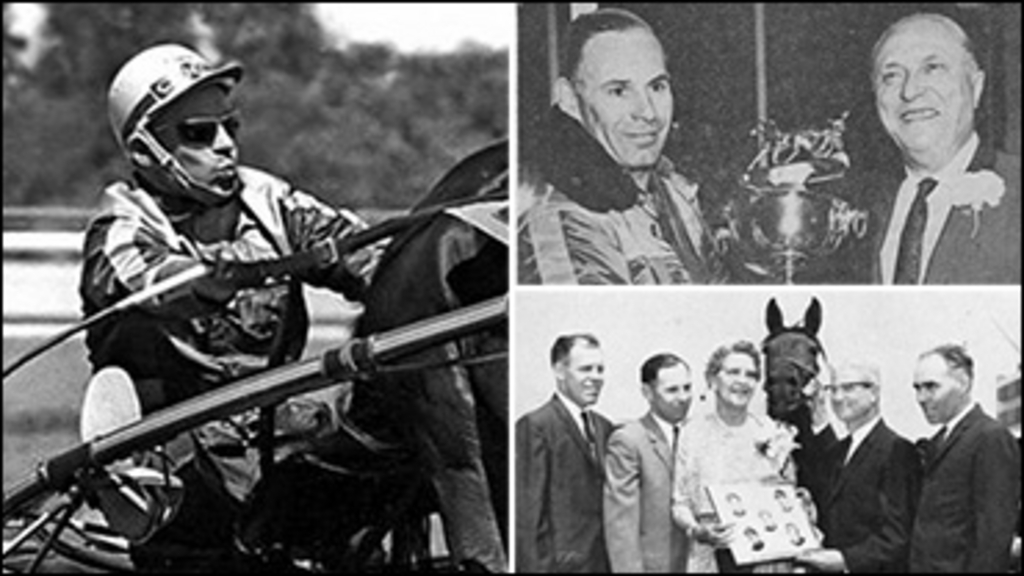
 In this week's edition of Rewind Robert Smith recalls the career of a truly great U.S. horseman, the late Stanley Dancer. He made countless trips to Canadian tracks and set many records during those visits.
In this week's edition of Rewind Robert Smith recalls the career of a truly great U.S. horseman, the late Stanley Dancer. He made countless trips to Canadian tracks and set many records during those visits.
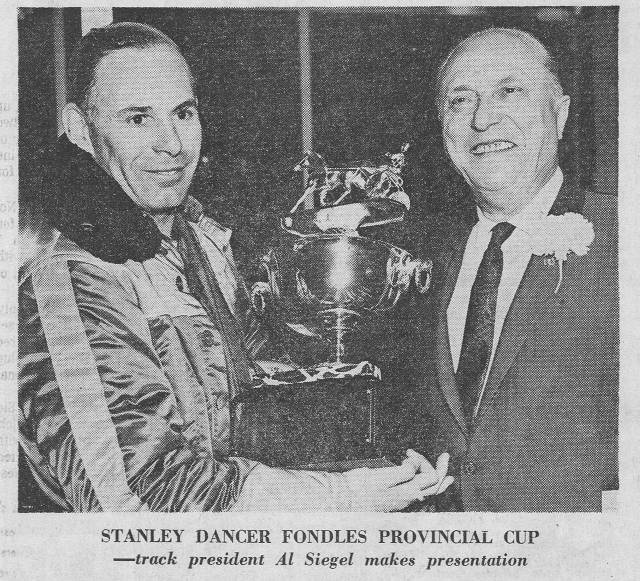
A smiling Stanley Dancer holds the Provincial Cup at Windsor Raceway in this 1968 photo. He was victorious that year with the amazing Cardigan Bay a horse that captivated the entire sport (Windsor Star)
Many accounts of the "Early Days" of harness racing seem to customarily depict the participants as "older" gentleman. Clad in their droopy and faded waistcoats and soft caps, brows weathered from many seasons in the sun, yet somehow wise in their ways. The faces of youth were seemingly not evident; perhaps this was not a sport for youngsters. Their place was in the background, learning the trade or "rubbing" as groom's work was commonly called back then. Their day would come.
In 1950, when the Yonkers track opened its doors as the second large night racing venue in Metropolitan New York, there was a young man at the forefront and he was there to be seen, heard and to stay for a very long time. His name was Stanley Dancer. The Yonkers site while considered new at the time, was actually over 50 years old, dating back to 1899 when it was known as The Empire City Track. There had been a track at this location all those years, although at times it was not in use. In the 1940's the famed Hambletonian was held here.
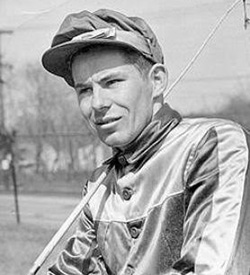 Stanley Franklin Dancer was born July 25th, 1927 in Edinburgh New Jersey, the youngest son of Helen and James Dancer. His folks were dairy and potato farmers, and while he had been involved in showing farm animals at local fairs and livestock exhibitions, his main interest was in horses. And thus it was to be for his entire lifetime. In 1946 he drove in his first race at Freehold Raceway near his home, piloting a mare named Starlings Girl. He reportedly had purchased the horse with $75 earned in a 4H competition and borrowed a set of silks from a family friend. He left school at a very young age to pursue his only dream which was to become the best horseman the sport had ever known. Many believe he achieved his goal and perhaps with more than a few "lengths" to spare.
Stanley Franklin Dancer was born July 25th, 1927 in Edinburgh New Jersey, the youngest son of Helen and James Dancer. His folks were dairy and potato farmers, and while he had been involved in showing farm animals at local fairs and livestock exhibitions, his main interest was in horses. And thus it was to be for his entire lifetime. In 1946 he drove in his first race at Freehold Raceway near his home, piloting a mare named Starlings Girl. He reportedly had purchased the horse with $75 earned in a 4H competition and borrowed a set of silks from a family friend. He left school at a very young age to pursue his only dream which was to become the best horseman the sport had ever known. Many believe he achieved his goal and perhaps with more than a few "lengths" to spare.
In 1947, still in his teens, he drew the attention of all as he piloted Eddie Voici to a 13-length victory at Roosevelt Raceway, stopping the clock in 2:13. One of his memorable early accomplishments involved the purchase of his first good horse, a trotter named Candor which started his own stable. He used $250 from his wife Rachel's college nest egg to purchase this old gelding by Scotland, and parlayed it into over $12,000 in purse earnings over the next three years.
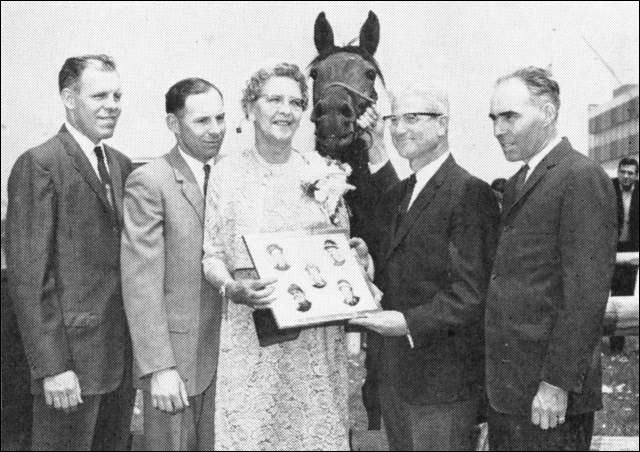
The Dancer family appear in this 1965 photo taken at Roosevelt Raceway on Mother's Day to honour their mother Helen, who was then 74 years young. A special plaque was presented to her on this occasion. (L-R): Vernon Dancer, Stanley Dancer, Mrs. Helen Dancer (their mother), Mr. Alvin Weil (Roosevelt Raceway President) and Harold "Sonny" Dancer. All three sons were noted drivers. [Harness Horse photo]
When the 1950 spring meeting at Yonkers opened on April 27th, young Stanley was a mere 22 years of age. Just three races into the inaugural night, he scored his first of many victories behind a trotter named Shooting Star co-owned by Stanley & James Dancer. He went on to win the driving championship at Yonkers and picked up 66 wins out of 346 drives, earning $80,623 in purse money, placing him 13th in the nation that season. From this point onward, his career skyrocketed and seemingly each year new heights were reached. He may have been somehow inspired by the horse he drove...Shooting Star.
The years that followed saw him develop, train and drive some of the very best horses of the modern era. To name a few, Albatross, Su Mac Lad, Duenna, Bonjour Hanover, Cardigan Bay, Keystone Ore. He won three Triple Crowns with Nevele Pride (Trotting), Most Happy Fella (Pacing) and Super Bowl (Trotting) to become the first and only trainer to do so. Added were four victories in The Little Brown Jug, and four in The Hambletonian. Throughout most of his lifetime he operated out of his own 160 acre farm at New Egypt New Jersey. It was indeed the birthplace of champions.
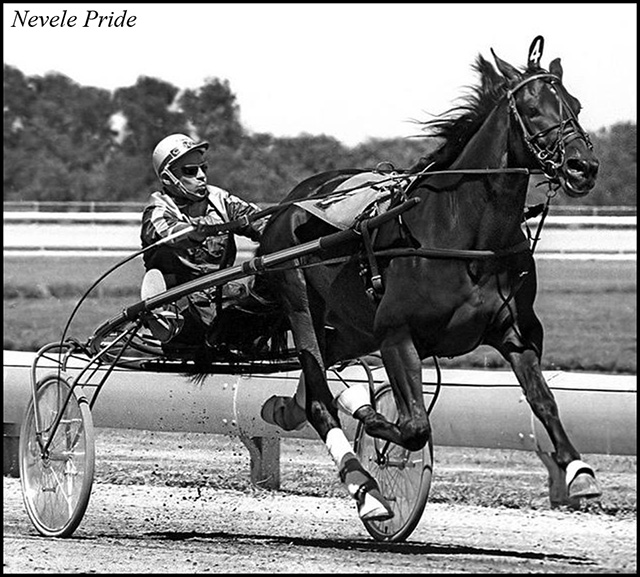
Dancer pilots the trotter Nevele Pride one of his many great horses. Purchased for just $20,000 he went on to win $871,738 and was sold for $3,000,000.
Dancer once said of harness racing: "It's my whole life. I don't have a hobby because I like to spend as much time as I can with my horses. I guess it's a hobby and a career at the same time. I really enjoy it...." He had quite a flair for the limelight and once visited the White House as a guest of Pres. Lyndon Johnson and also appeared with his horse Cardigan Bay on the old Ed Sullivan TV show. He was also pictured on the front cover of Sports Illustrated and even defeated boxer Joe Frazier in a baseball - hitting contest at Connie Mack Stadium. In all he spent 50 years in the sulky seat and several more from the sidelines. No stage was ever too large for his liking.
In the early years of Dancer's career he raced only in the U.S. where the best and most lucrative opportunities existed. At that time Canadian competition had little to offer. While he was a competitor and a lover of his profession, he was also a shrewd business person. As times changed, in the decade of the 1960's, Stanley took notice that harness racing in Canada was becoming much more competitive with its U.S. counterparts and with it came better purses. Dancer steadily increased his trips north of the border and understandably with the calibre of stock he brought with him soon became very popular and also highly successful.
In fairly short order -- and by that I mean a few years -- Stanley soon held numerous track records. His name appeared on the programs at Windsor, Greenwood, Connaught Park and both Richelieu Park and Blue Bonnets in Montreal as a driver of a record holder at all those tracks. Whenever Dancer was scheduled to appear, that day or evening's crowd automatically increased in size.
In 1964 Dancer reached a lofty plateau when his stable grossed in excess of one million dollars which in those days was a lot of "hay". He became the first driver ever to win over $ 1,000,000 in one racing season as he far outdistanced his closest competitor that year, Billy Haughton, who banked $825,179. The duo of Dancer and Haughton ruled the Metropolitan New York tracks for almost an entire decade. For eight consecutive seasons they finished first and second in the money winning standings, with each claiming the top spot four times.
Dancer was a real showman. Unlike many of his contemporaries he sought out the limelight, loved to sign autographs and never passed up a publicity opportunity. He left little doubt that he was in virtually every race for one reason and that was to win it and that was always his approach. Although he won practically every major race and award during his long career he often lamented his losses. Despite his victories in no less than four Little Brown Jugs he probably received the most publicity for his antics in the 1971 Little Brown Jug when he was defeated by Nansemond and Herve Filion. It was said to have haunted him for the rest of his life.
In an oft replayed scenario he reportedly smashed his stopwatch against the paddock wall in disgust after the crafty Frenchman defeated his horse Albatross, who was considered such a standout that he was barred from the betting. After the race a jubilant Herve said "I just kept yelling at my horse in both English and French; he is bilingual you know."
Stanley was a tough competitor and remained aggressive depite the many injuries and setbacks he experienced over the years. He survived 32 racing spills, four car accidents, a helicopter and a plane crash in addition to suffering two heart attacks during his driving days. Several times Doctors told him to quit driving but he continued on winning his last race as a driver in 1995. To the doctors he said "There is nothing dangerous about harness racing; the worst crackup I've had came in an auto accident. "
On September 9th 2005, Stanley Dancer passed away at the age of 78 at his second home in Pompano, Florida. While his mind remained sharp his body had grown weak from the many track injuries he had received in over 30 spills on the track. In his final years he became too immobile to attend the races and follow the sport he so dearly loved. Time had caught up with the man who seldom stopped. His lifetime accomplishments, career records and status within the sport placed him in a class of his own. His blue and gold silks were known as "the winningest anywhere." His memory will remain forever.
WHO IS IT?
Can you identify the persons and the horse in this week's photograph? The correct answer will be posted during the coming week.
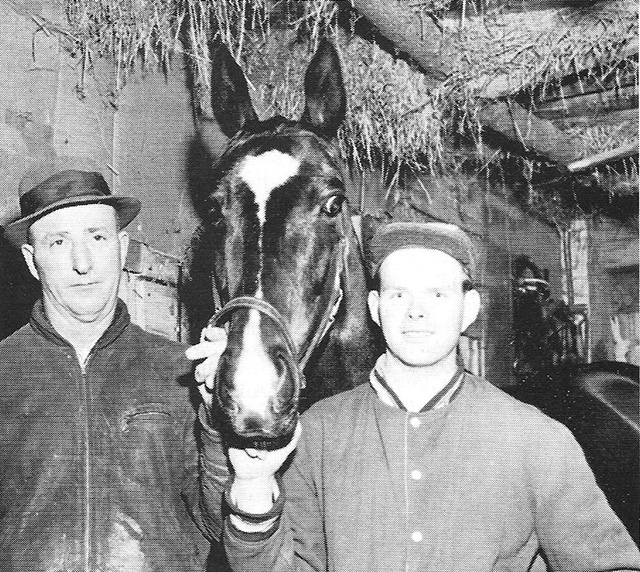


This week's "Who Is It?" was
This week's "Who Is It?" was the trio of Helen Brooke K, a phenomenal trotting mare that won close to $140,000 in her career (when that was a major accomplishment), flanked by her owners Grant Galbraith on the left and his son Clint -- both of Tara, Ont. -- who always drove her. She started racing at age 3 in 1957 at Old Woodbine and retired at the age of 11.
Thanks.
Pete Thibaudeau sent along
Pete Thibaudeau sent along the following note at 2:17 p.m. Aug.21
The photo is of Clint Galbraith & his father Grant Galbraith. The horse is Helen Brooke K - a trotter by Trubrook out of Make Believe. She was a very good trotter in her day & a very good broodmare in later years.
Pete Thibaudeau
Hanover Ont.
I think its Grant Galbraith
I think its Grant Galbraith and his son Clint. The horse is Helen Brooke K.
Grant and Clint Galbraith
Grant and Clint Galbraith with Helen Brooke Kay .
John cashman and Clint
John cashman and Clint Galbraith